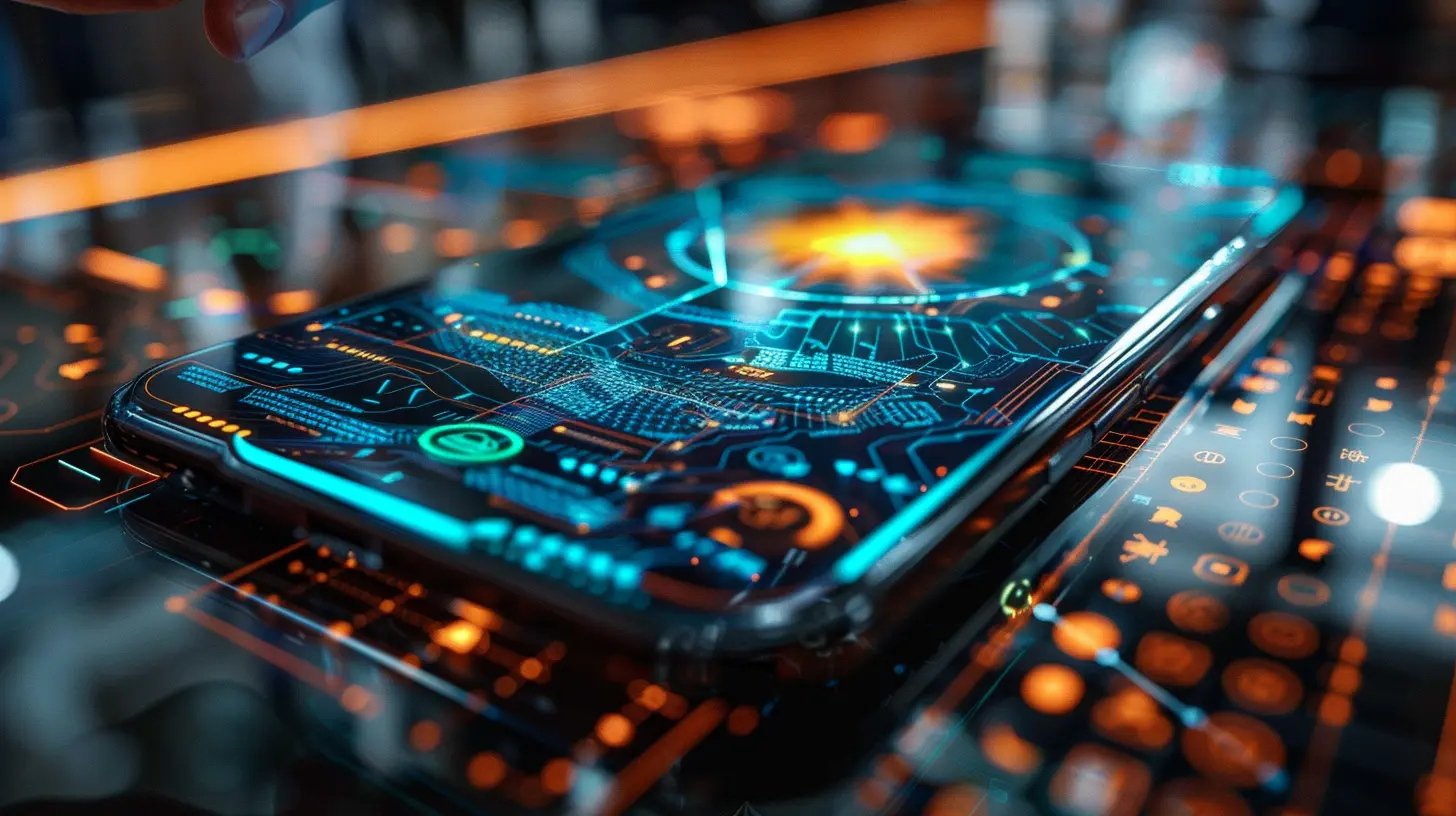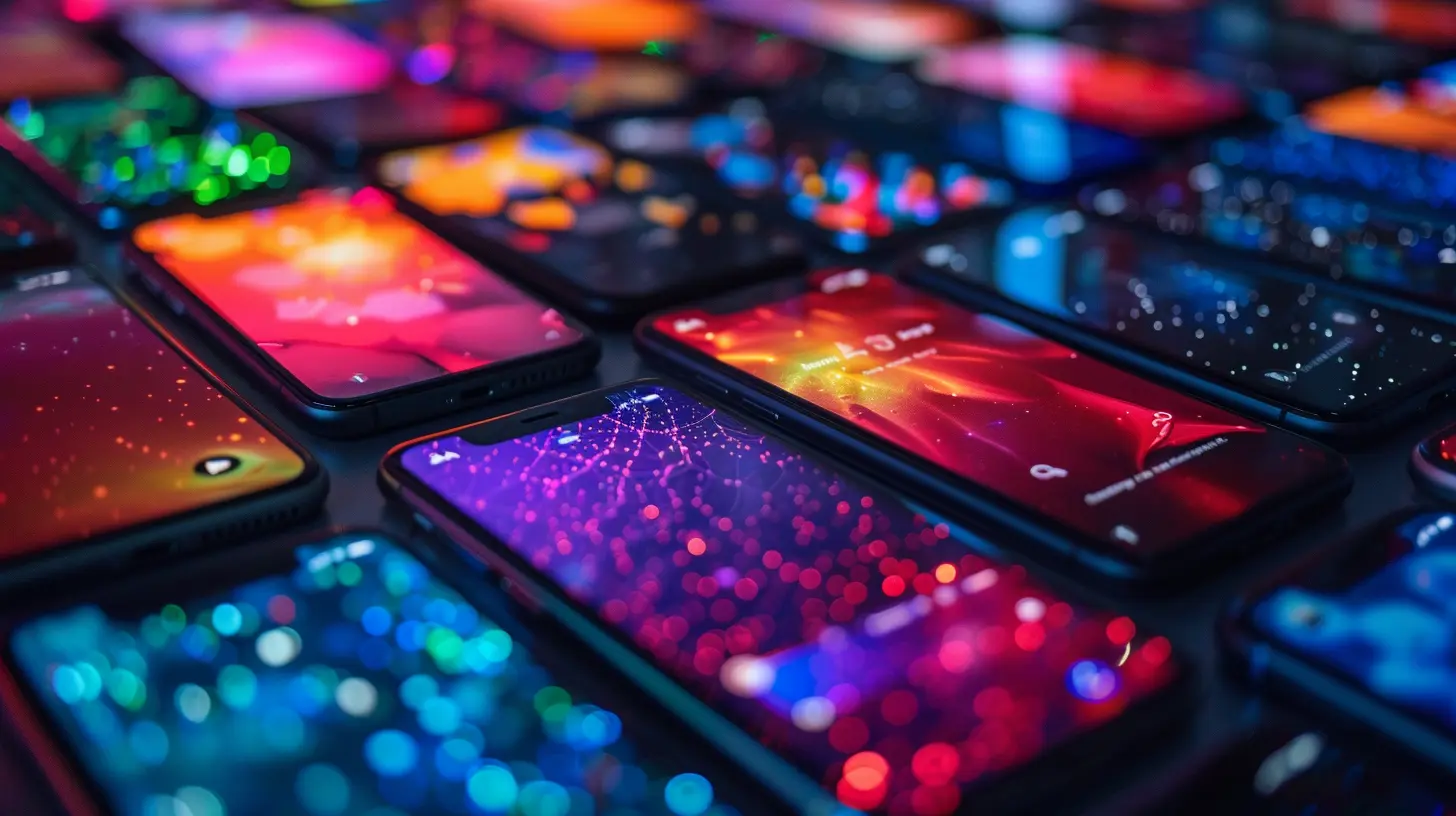8 April 2025
Mobile displays have come a long way. Remember the days when pixelated LCD screens were the height of innovation? Fast forward to today, and we have vibrant OLED panels dominating high-end smartphones. But the tech world never stops moving, and a new contender is stepping up—MicroLED.
So, what does the future hold for mobile displays? Will OLED remain king, or is MicroLED the next big thing? Buckle up because we're diving deep into the evolution of mobile display technology! 
A Quick Look Back: How We Got Here
Before we gaze into the future, let’s rewind a bit. Mobile screen technology has evolved at a breathtaking pace.- LCD (Liquid Crystal Display): The foundation of early mobile displays, with LED backlights providing illumination. Great for power efficiency but lacking deep blacks.
- OLED (Organic Light-Emitting Diode): Changed the game by eliminating the need for backlights. Each pixel emits its own light, offering better contrast, deeper blacks, and a more immersive experience.
For years, OLED has ruled the premium smartphone market. But now, MicroLED is the rising star—and it could be what finally dethrones OLED. 
OLED: The Current Standard in Mobile Displays
OLED has been the go-to for flagship smartphones. Whether it's Samsung’s high-end Galaxy models or Apple's iPhones, most premium devices feature OLED screens. But why is OLED so popular?Why OLED is So Good
1. Perfect Blacks & Infinite Contrast – Since each pixel can turn on and off independently, OLED provides deeper blacks and incredible contrast.2. Vivid Colors – The color reproduction is top-notch, making content look stunning.
3. Better Power Efficiency (in Some Cases) – When displaying black or darker elements, OLED consumes less power than LCD.
4. Flexible & Foldable Possibilities – OLED screens are thin and flexible, enabling foldable and rollable smartphone designs.
The Downsides of OLED
But it's not all sunshine and rainbows. OLED has its share of flaws:- Burn-in Issues – Over time, static images can leave permanent ghosting on the screen.
- Limited Lifespan – Organic materials degrade, which causes color shifting and brightness reduction over time.
- Expensive Production – OLED panels are costly to manufacture, making devices more expensive.
This is where MicroLED comes into play. It promises to keep everything great about OLED while fixing its biggest flaws. 
Enter MicroLED: The Future of Mobile Displays?
You've probably heard about MicroLED in passing. But what makes it so exciting? Let’s break it down.What is MicroLED?
MicroLED uses microscopic LEDs to create each pixel. Unlike OLED, it doesn’t rely on organic materials, meaning longer durability and no risk of burn-in. It retains the perks of self-emissive displays while improving upon them.Why MicroLED Could Be a Game Changer
1. No Burn-in Issues – Since there are no organic components, there’s no risk of permanent image retention.2. Higher Brightness – MicroLED displays can get significantly brighter than OLED, making them perfect for outdoor visibility.
3. Longer Lifespan – Without organic materials degrading over time, MicroLED screens offer better longevity.
4. Superior Power Efficiency – These screens consume less power, especially at high brightness levels.
5. Better Color Accuracy – MicroLED promises incredible color fidelity while avoiding OLED’s aging problems.
Sounds like a dream, right? So why isn’t every smartphone company throwing MicroLED into their devices already? Well, there are a few roadblocks. 
Challenges Facing MicroLED Adoption
Despite its advantages, MicroLED isn't quite ready to take over just yet. Here’s why:1. Manufacturing Hurdles
MicroLED panels are insanely difficult to manufacture. Each pixel consists of tiny LEDs, and aligning them correctly on a phone-sized panel is a massive challenge. The precision required is much higher than OLED.2. Cost Problems
Right now, producing MicroLED displays is incredibly expensive. We’re talking costs far beyond even the priciest OLED panels. Until manufacturers refine production processes, it's going to remain out of reach for most consumers.3. Limited Availability
You've probably seen MicroLED TV prototypes from brands like Samsung and Sony. But when it comes to smartphones, it’s a different story. The tech simply isn’t scaled down for small displays yet.So, while MicroLED is the future, it’s still a few years away from being mainstream.
Other Emerging Display Technologies
While MicroLED is on the horizon, it's not the only innovation happening in the world of mobile screens.1. Mini-LED: A Middle Ground
Mini-LED isn’t the same as MicroLED, but it’s an improvement over traditional LCDs. These screens use thousands of tiny LED backlights for better contrast and brightness. Apple’s iPad Pro and some high-end laptops already use Mini-LED.2. Quantum Dot OLED (QD-OLED)
QD-OLED is another exciting technology that combines OLED with quantum dots for better brightness and color accuracy. Samsung is already working on this for TVs, and we might see it in mobile devices soon.3. Foldable & Rollable Displays
With OLED enabling flexible screens, the future could see more foldable and rollable phones. Samsung has already made strides here, and companies like Oppo and LG are exploring even crazier designs.What Can We Expect in the Next 5 Years?
The future of mobile displays looks incredibly promising, but what's actually going to hit the market in the next few years? Here’s a realistic timeline:- 2024-2026: OLED will continue to dominate, with refinements in power efficiency and durability. Mini-LED will show up in more devices, particularly tablets and laptops.
- 2027-2028: We might finally see the first commercial MicroLED smartphones, though they’ll be expensive at first.
- Beyond 2028: If manufacturing costs come down, MicroLED could start replacing OLED in mainstream flagship phones.
Until then, OLED will remain the standard, with improvements in brightness, refresh rates, and durability.
Final Thoughts: OLED vs. MicroLED - Who Wins?
OLED is today’s champion, and it won’t be dethroned anytime soon. However, MicroLED holds the key to the next generation of mobile displays. It solves OLED’s weaknesses while pushing display tech to new heights.The big hurdle? Cost and manufacturing challenges. Once those are resolved, MicroLED could take over, offering the best of both worlds—without compromises.
For now, we’ll enjoy our OLED and Mini-LED screens while eagerly waiting for the next revolution in smartphone displays.
Are you excited about MicroLED, or do you think OLED still has a long way to go? Share your thoughts in the comments!






Colton Morrow
As we transition from OLED to MicroLED, expect displays that redefine clarity and efficiency. The future isn't just brighter—it's smarter. Say goodbye to burn-in and hello to limitless possibilities in mobile screen technology!
April 16, 2025 at 6:33 PM